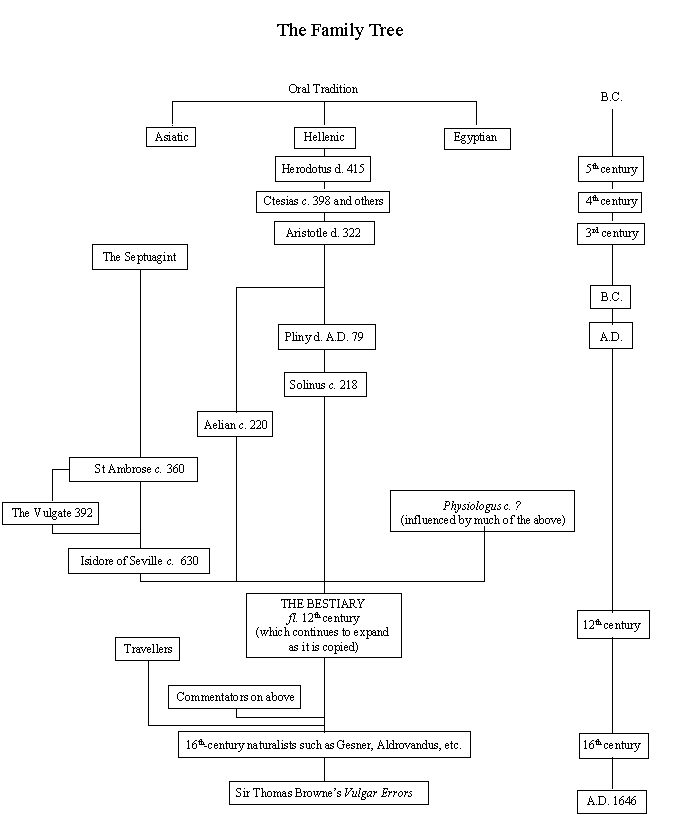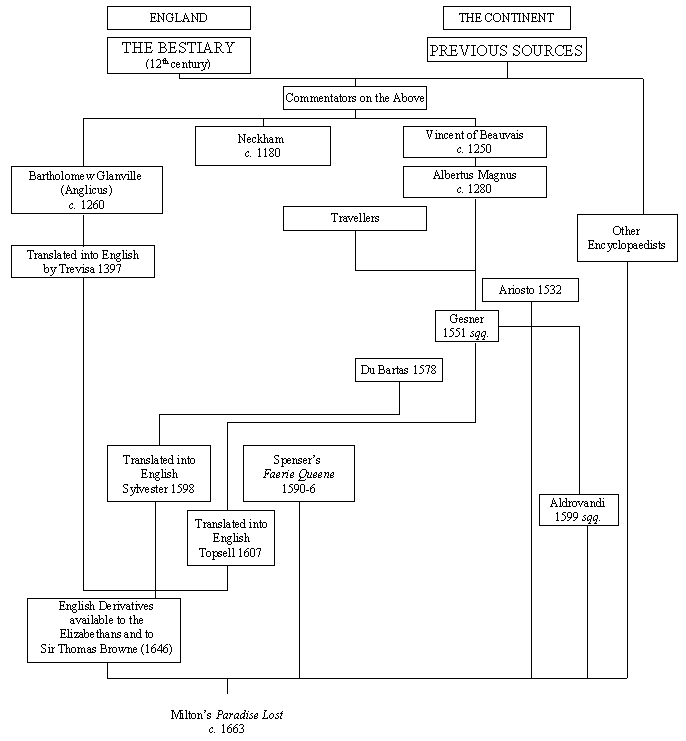A small group of Buckley sgraffito pieces contain images of animals and birds with text. The source for these cannot be determined precisely, but it is possible that they derive from the resurgence in the 16th and 17th centuries of the medieval bestiary texts and illustrations.
The earliest known bestiaries date from the 10th century, with the majority written in the 12th and 13th centuries (Clark and McMann 1989, 3). They consist of passages, chapters and paraphrases from the Physiologus, a classical text on animals which was translated into Latin from the original Greek before 386 AD (Baxter 1998, 28). It is likely to have been written by Greek and Roman naturalists and physicians, e.g. Aelian, Dioscorides and Pliny (Williamson 1986, 42).
The Physiologus exists in a number of versions. Each chapter describes the characteristic of an animal, bird, serpent or insect, drawn from direct observation, traditional lore, fable and myth with the addition of Christian moralisations (Clark and McMann 1989, 2).
The writers of the medieval bestiaries added animal lore from Near Eastern and classical sources, from natural histories, from folklore and from various Christian writers (ibid, 3). From the 49 beasts in the original Physiologus, the medieval bestiaries contained more than double that number (White 1969, 243).
The majority of Bestiaries are illustrated, whereas illustrations are rare in the Physiologus. Latin manuscripts peaked in the late 12th and 13th centuries while vernacular versions continued in popularity into the early 15th century (Clark and McMann 1989, 4). The medieval texts combined bestiary lore with material from other sources, both theological and secular, and also with an increasing amount of scientific observation (ibid, 5). They became a collection of morality tales of animals and plants to convey an understanding of the scriptures and the conduct of a good Christian (Williamson 1986, 48). Church doctrine of the Middle Ages used nature, animals and plants, to teach about good and evil. Much of the population was illiterate, so the use of images as a visual parable was a direct means of communication (ibid, 41).

Figure 13: The Family Tree (after White 1969, 233)
It is useful to look at the Family Tree to trace the development of the bestiary (Fig. 13). In the late 16th and early 17th centuries, writers such as Gesner, a Swiss naturalist writing from 1551 onwards, and Du Bartas (1578) were translated into English by Topsell (translated Gesner in 1607) and Sylvester (translated Du Bartas in 1598).
It is generally thought that the Elizabethans were most influenced by these writers and that they led to the popularity of fabulous animals in literature. The influence on literature is seen in Figure 14. Spenser's Faerie Queen was written in the late 16th century. In 1646 Sir Thomas Browne subjected the observations of Topsell and Sylvester to rational criticism in his Pseudodexia Epidemica, generally known as Vulgar Errors, and began to raise the subject of biology to a scientific level. Milton used much reference to fabulous beasts, for example in Paradise Lost, written in 1663. Other poets, writing at a later date, who mention beasts include Pope (1688-1744) and Tennyson (1809-1892) (ibid, 128).

Figure 14: Influence in literature (after White 1969, 263)
By the 16th and 17th centuries, more people were literate, though not necessarily intellectual (Clark and McMann 1989, 5). The translations of Du Bartas and Gesner into English led to a wider contact with the bestiary tradition. This coincided with the growth of Puritanism in the country. It is likely that the religious leaders taught the Christian doctrine using the symbolism of good and evil contained in the bestiaries. Those who could read would be encouraged to read the Bible and, possibly, a copy of a bestiary translation. The entire text of a bestiary is heavy with biblical quotations. The first, literal section tends to include passages from the Old Testament, and the second section relates to the New Testament (Baxter 1998, 33).
It is impossible to know how many people had access to the bestiary literature. It is quite possible that families could have used the stories that they heard in church as moral tales in an oral tradition, much as nursery rhymes or Viking sagas were used, to be handed down through the generations.
There are some fragments of sgraffito pottery found at Brookhill which feature images of birds, worms and elephants (12-32). In addition to the images, some of the pieces also include a motto on the rim (25-32 and 139). The wording of the mottoes is as follows:
..d throw and he is begyl (25)
..to dea..s stonge: The Drgon ..(26) ..lapante and .he Ela.. (29)
..to sleep .gainst a tree ·it is t..(27)
..hee lumdeth his lo..(30)
..e elapha..(31) ..nt h.. (139) [joining pieces]
.ae yet d..(32)
© Internet Archaeology URL: http://intarch.ac.uk/journal/issue16/1/ch6.34.html
Last updated: Wed Mar 24 2004